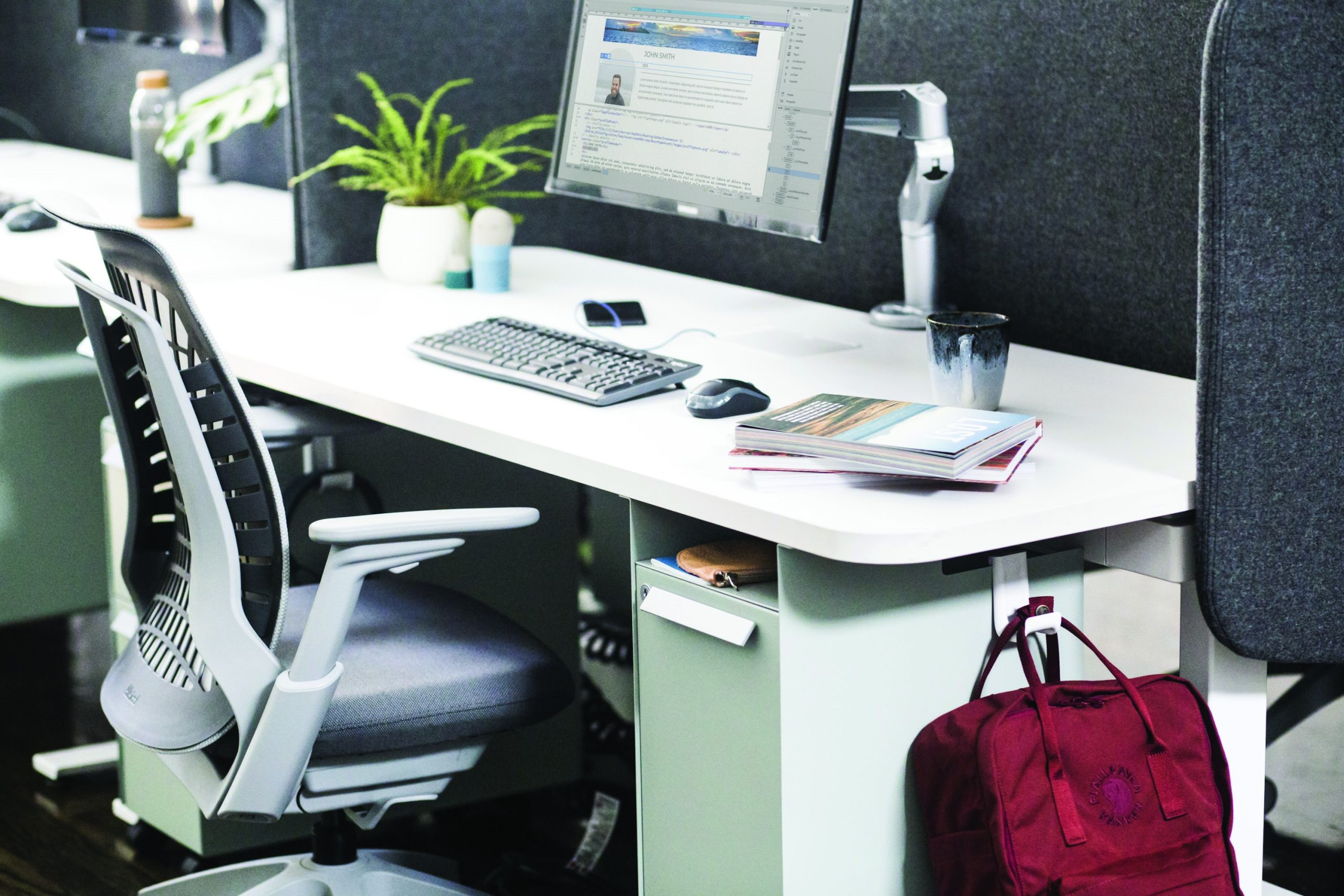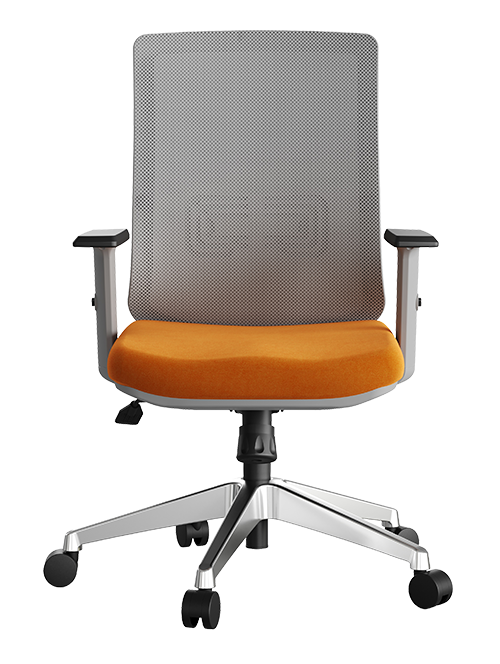Height-Adjustable Worksurface : Points to consider
What to Consider When Swapping to a Height-Adjustable Worksurface

Height-adjustable worksurfaces offer great opportunities for movement and posture changes throughout one’s day—especially helpful for those workers who are tied to their desks, with limited capacity to work in alternative locations.
To create the most comfortable, intuitive, and usable environment, consider the tools that are attached to the worksurface
Monitor Arms
Monitors should be adjusted to a height that allows a straight neck postures and a slight downward gaze of the eyes. Because users often recline, even slightly, in seated postures, the monitor height (in relation to the worksurface height) will likely need to be adjusted as users switch between sitting and standing postures.
Monitor arms that allow for quick and easy tool-less height adjustment is ideal to foster proper ergonomic postures and have the potential to increase anxiety about whether the product is usable for all.

Keyboard Trays
From an ergonomic perspective, the use of keyboard trays is not necessary with height-adjustable tables, and may even contribute to fatigue in some postures. The height of one’s table should be adjusted for proper position of the wrists, forearms, and shoulders. The table should be adjusted to a height that allows for forearms to be supported, elbows at approximately 90 degrees, and relaxed shoulders (not hunched or elevated to ears). The use of the table surface is advantageous during standing positions as the table will offer support for the arm during and between typing and mousing activities. Alternatively, if a keyboard tray is used, the arms will be unsupported while standing, increasing low-level muscle activity of shoulder, back, and neck muscles, potentially contributing to fatigue and discomfort over time.
Keyboard trays are not typically recommended with height adjustable worksurfaces for several reasons, including:
- The adjustability of the worksurface height is redundant with the adjustability of the keyboard tray, and
- The mechanisms to operate the height adjustable feature are typically mounted to the underside of the table, and often obstruct the track of the keyboard tray.
- The keyboard tray adds to the complexity of adjusting additional equipment (including the worksurface and monitors) to a safe and ergonomic position.
Because the table should be adjusted to the proper keyboard height (instead of monitor height), monitor arms should be used to adjust the monitors to their proper positioning for sitting and standing postures. Proper positioning of the monitor will allow for straight neck postures and reduce risk of neck discomfort.
In rare occasions, the attachment of a keyboard tray to a height-adjustable table is justified. These occasions include:
- The desire to tilt the keyboard downward (a posture that some individuals find more comfortable – although arms are unsupported),
- To create more free space on the worksurface for reference materials by removing the keyboard and mouse to a tray (valuable with overly narrow worksurfaces),
- The worksurface does not go low enough in a seated posture to meet the needs of an individual,
- The need for increased in work space because the desk is not deep enough.
If keyboard trays are included, it is important to ensure that the table mechanism will not interfere with the keyboard track. Special options or a shortened track may be required. If modifications are made to the track, it is important to confirm that a limited/shortened track will not be an issue from an engineering and application standpoint. It should also be noted that keyboards may not fully recede under the table with modifications.

Conclusion
Height adjustable tables make keyboard trays unnecessary, but old habits die hard. Users and specifiers should fully explore the use of monitor arms and chair arms, and all the adjustments they offer, and help users to adjust them appropriately when seated or standing to create a comfortable, productive, and ergonomic experience.

